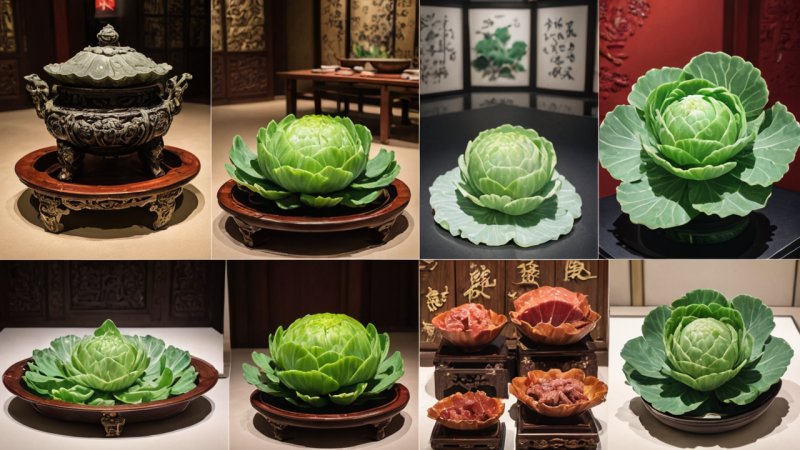Introduction
The National Palace Museum, located in Taipei, Taiwan, is one of the world’s most significant cultural institutions, housing an extensive collection of Chinese art and artifacts. With over 700,000 pieces, this museum offers a rich tapestry of Chinese history and aesthetics, making it a must-visit for art lovers and history enthusiasts alike. Here, we present the top 7 treasures that you shouldn't miss during your visit.
1. The Jade Cabbage
Description: The Jade Cabbage is perhaps the most famous piece in the National Palace Museum's collection. This exquisite carving made from jadeite resembles a cabbage and is intricately detailed, symbolizing fertility and prosperity in Chinese culture.
2. The Meat-shaped Stone
Description: Another highlight is the Meat-shaped Stone, a clever piece of artistry that mimics the appearance of braised pork. This stone, with its realistic texture and color, showcases the skill of Chinese artisans and is a testament to the creativity found throughout the museum.
3. The Ming Dynasty Porcelain
Description: The collection of Ming Dynasty porcelain is a feast for the eyes, featuring vibrant colors and intricate designs. These pieces are not only beautiful but also provide insight into the technological advancements and artistic expressions of the time.
4. The Calligraphy Scrolls
Description: Calligraphy is a revered art form in China, and the museum boasts an impressive array of calligraphy scrolls from renowned masters. Visitors can appreciate the elegance and fluidity of Chinese characters, which convey profound philosophies and cultural narratives.
5. The Qing Dynasty Furniture
Description: The museum also showcases exquisite furniture from the Qing Dynasty, characterized by its intricate carvings and luxurious materials. This collection provides a glimpse into the lifestyle and aesthetics of the Chinese elite during this period.
6. The Ancient Coins
Description: For history buffs, the collection of ancient coins is a remarkable highlight. Each coin tells a story of trade, economy, and the evolution of currency in China, reflecting the country’s rich history and cultural significance.
7. The Emperors' Robes
Description: Lastly, do not miss the display of imperial robes worn by Chinese emperors. These garments are not only visually stunning but also represent the power and prestige of the imperial family, adorned with symbols that denote rank and status.
Conclusion
Visiting the National Palace Museum is an enriching experience that offers a deep dive into Chinese culture and history. From the delicate artistry of jade carvings to the grandeur of imperial attire, each treasure tells a unique story. Be sure to allocate enough time to explore these masterpieces, as they represent the essence of Chinese heritage and craftsmanship.






